Discover the sizzling world of Japanese yakiniku, where the art of grilling meets the pleasure of communal dining. With its origins in Korean barbecue, this tradition offers more than just a meal—it’s an immersive experience. The tantalizing aroma, the hands-on cooking, and the rich flavors all come together to create a unique dining adventure. Join us as we delve into the nuances of yakiniku, exploring its history, ingredients, grilling techniques, and the cultural significance that makes it a must-try for food enthusiasts and curious minds alike.
What is Japanese Yakiniku?
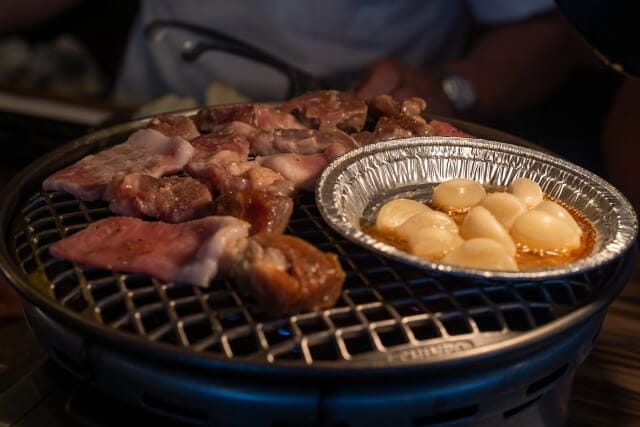
Japanese Yakiniku (焼肉) is a popular style of dining that involves grilling bite-sized pieces of meat, often beef, pork, and sometimes chicken, on a charcoal or gas grill right at the table. The name “yakiniku” translates to “grilled meat” in Japanese, where “yaki” means grilled or cooked over an open flame, and “niku” means meat. Its interactive and social nature characterizes Yakiniku, as diners cook the meat themselves at their table grills. The meat is usually marinated or seasoned before grilling, and it’s common to have a variety of dipping sauces and side dishes to complement the grilled meats. These side dishes include vegetables, rice, kimchi, and other accompaniments.
The meat in yakiniku can vary, but high-quality cuts are often well-suited for grilling. Wagyu beef, which includes various premium Japanese beef breeds known for their marbling and tenderness, is especially prized for yakiniku due to its flavour and texture. Some wagyu or Japanese premium beef are Kobe Beef, Matsusaka Beef, Omi Beef, and Hida Beef. Yakiniku restaurants range from casual to upscale, and some even offer all-you-can-eat options where customers can order and grill as much meat as they’d like within a certain time frame.
Japanese Yakiniku History
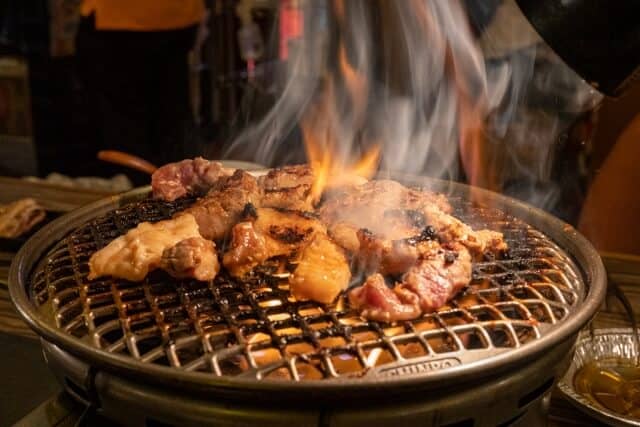
The origins of yakiniku are linked to Japan’s post-war era, heavily influenced by the food culture introduced by the American military. The initial trend was to grill beef and pork on iron plates or grills. Subsequently, the influx of Korean immigrants and students paved the way for authentic yakiniku restaurants, diversifying their styles nationwide. Concurrently, yakiniku’s roots trace back to the Korean Peninsula, where a rich tradition of grilling meat has long been practiced. The cherished Korean custom of enjoying yakiniku at home also found its place in Japan.
Post-war Japan witnessed a surge in meat imports from the United States, notably beef, which fueled the yakiniku craze. What was once considered an upscale treat gradually became a ubiquitous culinary phenomenon, giving rise to many yakiniku variations. The 1960s saw an influx of South Korean immigrants, establishing numerous Korean-style yakiniku eateries. Furthermore, Hokkaido became a hub for yakiniku restaurants showcasing Japan’s prized wagyu beef, including upscale establishments dedicated to this premium ingredient.
During the 1990s, affordable beef imports flooded the market, prompting many yakiniku venues to opt for foreign-produced meat. However, recent times have witnessed a renewed focus on traceability and quality, resulting in a resurgence of domestically sourced beef in yakiniku establishments. Present-day yakiniku experiences encompass diverse styles, including private rooms and communal tables, fostering a widespread and cherished food culture enjoyed by diverse patrons.
Difference between japanese yakiniku and BBQ
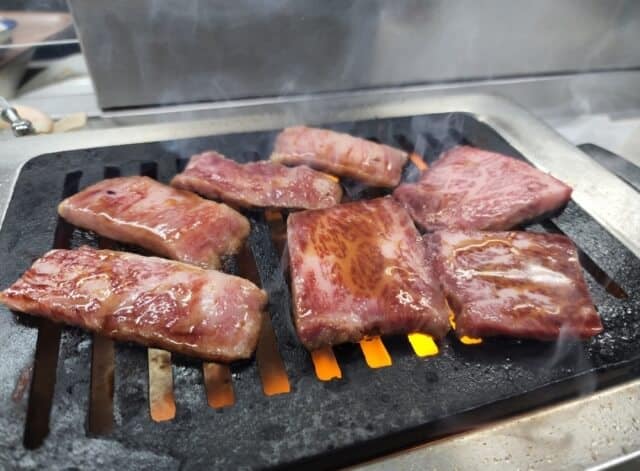
Japanese yakiniku and BBQ closely intertwine as dining styles involving tableside meat grilling, yet they diverge in several aspects. In yakiniku, diners concentrate on bite-sized meats—beef, pork, and chicken—with Wagyu beef’s prized marbling. Meanwhile, Japanese BBQ extends its focus to encompass a broader ingredient range, from meats to vegetables, seafood, and tofu, resulting in a more diverse spread. In yakiniku, patrons personally grill meats using tongs or chopsticks on tabletop grills, emphasizing swift precision. In Japanese BBQ, a similar self-grilling concept applies. However, the presence of various ingredients may alter the cooking process slightly. Marinating or lightly seasoning meats characterize both yakiniku and Japanese BBQ. Still, the latter showcases more diverse seasoning approaches due to its ingredient variety.
While yakiniku features soy-based, sesame-based, or citrus-based dipping sauces and side dishes such as rice, vegetables, and kimchi, Japanese BBQ introduces a wider spectrum of accompaniments, reflecting its inclusion of vegetables and seafood and aligns with dipping sauces that harmonize with multifaceted flavors. While yakiniku emerged from Korean barbecue influences to integrate into Japanese dining culture, Japanese BBQ exhibits a broader cultural foundation, enmeshed with traditional Japanese grilling methods and ingredients. Yakiniku venues craft an intimate atmosphere with personal table grills. In contrast, Japanese BBQ settings vary widely, adapting to the restaurant’s concept. The yakiniku experience spotlights meat appreciation and interactive grilling. At the same time, Japanese BBQ fosters a more comprehensive presentation, integrating diverse ingredients and flavors for a well-rounded culinary encounter.
Popular parts of beef for yakiniku
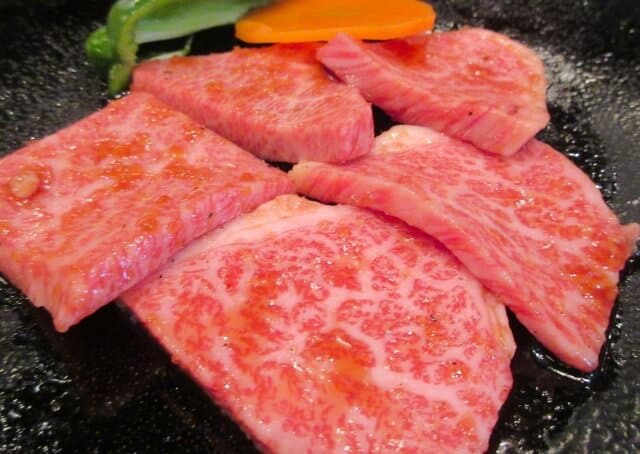
Ox Tongue (Gyutan)
Ox tongue, known as “gyutan” in Japanese, is a beloved yakiniku choice. Gyutan is prized for its tender texture and rich flavor. It’s typically thinly sliced and has a slightly chewy quality that becomes tender and flavorful when grilled. The marbling in the tongue contributes to its taste and juiciness. Due to its popularity, gyutan specialty restaurants are common in Japan, especially in Sendai, where the dish originated.
Beef Skirt Steak (Harami)
Beef skirt steak, “harami” in Japanese, is another sought-after yakiniku option. It’s renowned for its balance of tenderness and beefy flavor. The skirt steak is often marinated before grilling to enhance its taste. When cooked to perfection, harami is tender with a satisfying chew. It’s a versatile cut that pairs well with various seasonings and dipping sauces.
Kalbi (Short Ribs)
Kalbi, or beef short ribs, is one of the signature cuts in yakiniku. These ribs are typically cut across the bone, resulting in a flavorful combination of meat and bone marrow. The marbling in the short ribs contributes to their richness when grilled. Kalbi is often marinated in a sweet and savory sauce, which caramelizes during cooking, creating a delightful glaze. The combination of flavors and textures makes Kalbi a favorite among yakiniku enthusiasts.
Beef Tenderloin (Filet Mignon)
Beef tenderloin, known as “fillet” or “filet mignon” in yakiniku, is renowned for its exceptional tenderness. It’s a lean cut with minimal fat marbling, offering a clean, delicate beef flavor. While it might lack the intense marbling of other cuts, the tenderloin’s appeal lies in its buttery softness. Grilling it lightly with minimal seasoning allows the natural taste of the meat to shine.
Chicken Tail Grilled Skewer (Bonjiri)
Bonjiri (ぼんじり) is a popular type of yakitori (grilled chicken skewer) in Japan, specifically made from the tail part of the chicken. It is known for its rich flavor, crispy skin, and juicy texture, as this part contains a good amount of fat.
Japanese Yakiniku FAQ
- Why is it okay to eat beef rarely?
Beef is still reddish, so-called rare meat that can be eaten. The reason beef can be eaten even when it is rare is that it is free from parasites and fungi by controlling the breeding environment and constitution of the beef. However, even if the inside of the beef is sterile, the surface of the beef is different. If you eat meat with many bacteria, you may get food poisoning, so be careful.
- What dipping sauces are typically served with yakiniku?
Yakiniku is typically accompanied by an array of dipping sauces that elevate the flavors of the grilled meats. These sauces, which vary by restaurant and region, include staples like Tare Sauce, Sesame Sauce, Tangy Ponzu Sauce, Korean-inspired Gochujang Sauce, Yakiniku Salt, freshly grated Wasabi, and Spicy Miso.
Japanese Yakiniku Recipe
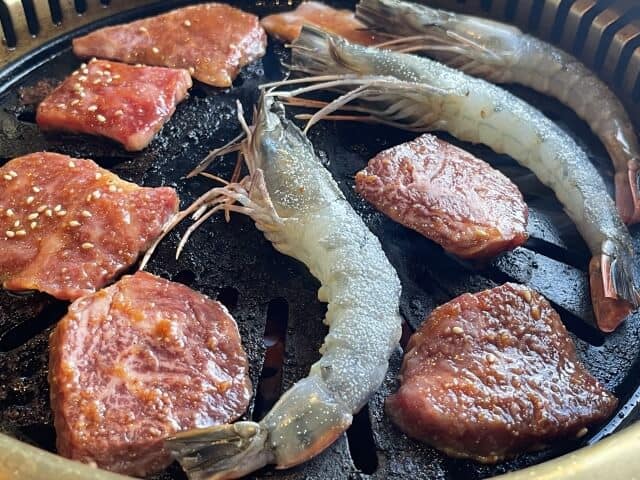
Japanese Yakiniku Ingredients
| Ingredients of Japanese Yakiniku for 2 persons | Measurements |
|---|---|
| Beef (for grilled meat, dice steak, etc.) | 200g |
| Cabbage | 40g |
| Green pepper | 7g |
| Red bell pepper | 8g |
| Bean sprouts | 20g |
| Raw shiitake mushrooms | 15g |
| Carrot | 5g |
| Salad oil | 14g |
| Butter | 7g |
| Kikkoman yakiniku restaurant Medium spicy | 42g |
How to make Japanese Yakiniku?
Bring beef to room temperature.
Cut the cabbage into chunks and the green pepper into 8 lengthwise pieces. Remove the roots of the bean sprouts. Remove the stems from the shiitake mushrooms and slice thinly. Cut the carrots into strips.
Heat a hot plate, add salad oil and butter, and grill the beef and vegetables. Cook the vegetables while stirring. When it is fragrantly grilled, dip it in the yakiniku sauce and eat it.
Where to buy Japanese Yakiniku?
Jojoen Yebisu Garden Place (叙々苑 恵比寿ガーデンプレイス店)
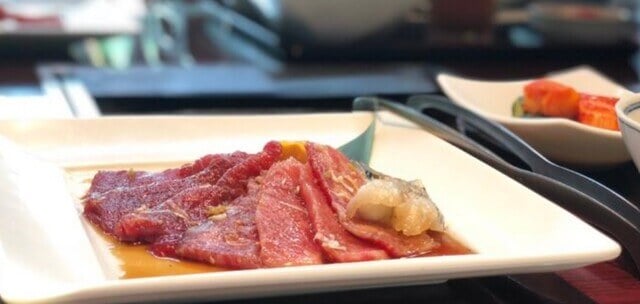
Regarding Tokyo’s finest yakiniku, Jojoen is a famous restaurant you can’t miss. There are many “Jojoen” in Tokyo, but the view from the 38th and 39th floors of this Yebisu Garden Place store is very beautiful. The view can be seen from any seat, making it perfect for a date. Of course, you can enjoy the finest quality yakiniku.
Satsuma Beef Storehouse Hiroo (薩摩 牛の蔵 広尾本店)
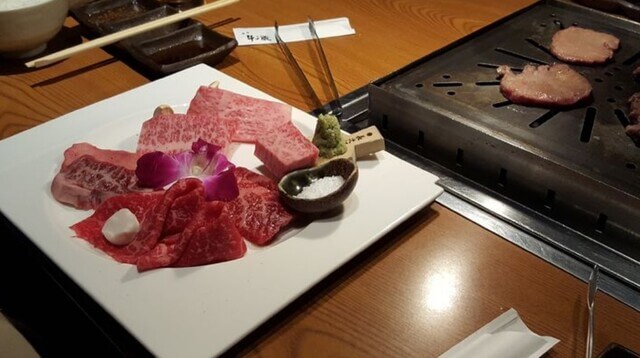
The restaurant has a stylish atmosphere and is a famous yakiniku restaurant where you can enjoy Kagoshima’s Kuroge Wagyu beef. It is recommended because it offers the highest-rank meat at a reasonable price while the taste is exquisite. The place called Hiroo is also fashionable, and all rooms are private, so it is a famous yakiniku restaurant that we recommend because it can be used for any occasion, such as dating or business.
Ushigoro Nishiazabu Main Store (うしごろ 西麻布本店)
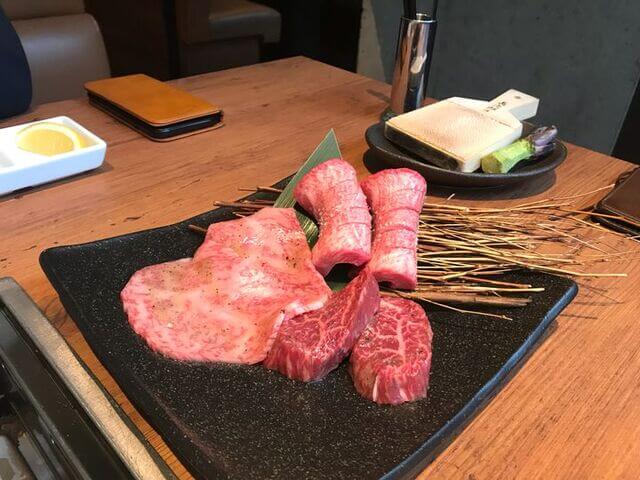
In addition to the main store in Nishi-Azabu, there are two stores in Ginza, one in Omotesando and one in Yokohama. At this restaurant, the finest beef tongue is very popular. In addition to the “Kiwami no Tongue,” you can choose tongue shabu-shabu and thin slices. If you eat beef tongue from this restaurant, you will feel happy on this restaurant.
Takeaway
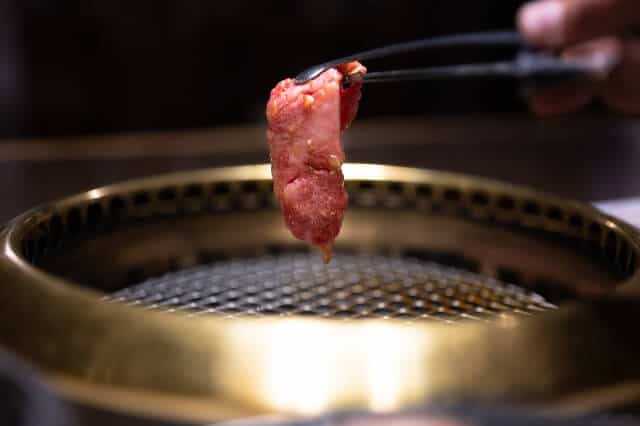
Japanese yakiniku offers a delightful culinary experience that invites locals and visitors to savor the rich tradition of grilling bite-sized meats at the table. Through this article, we’ve explored the origins of yakiniku, its cultural significance, and the interactive nature of the dining style. This cooking method became uniquely Japanese, celebrated for its focus on high-quality, marinated beef, pork, and sometimes seafood cuts. By grilling these delectable morsels over an open flame, diners engage in a communal and flavorful feast, fostering connections and joyful moments.
You can check some Japanese grilled dishes that we know you would like to try too.



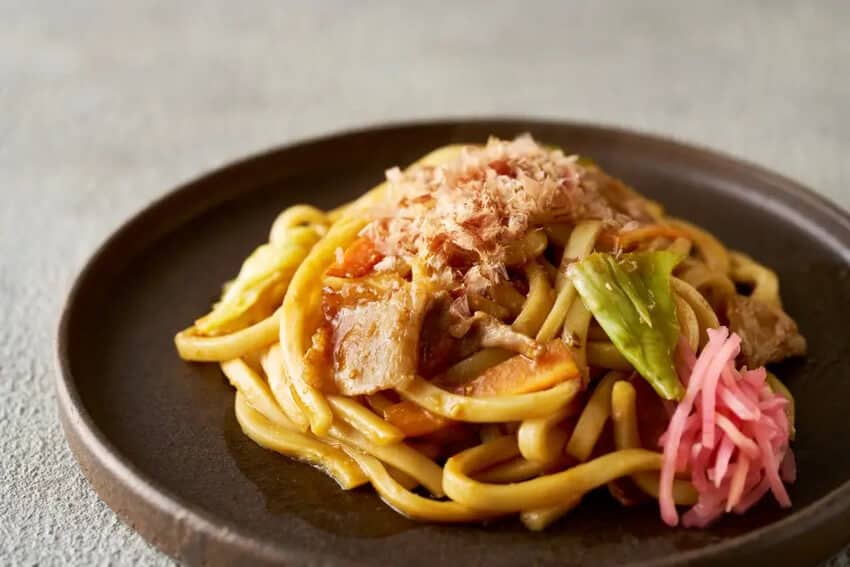
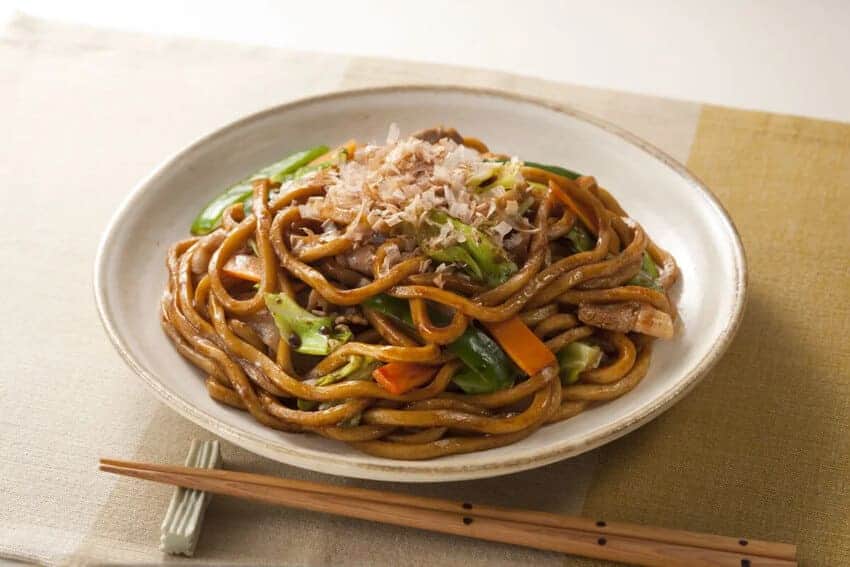

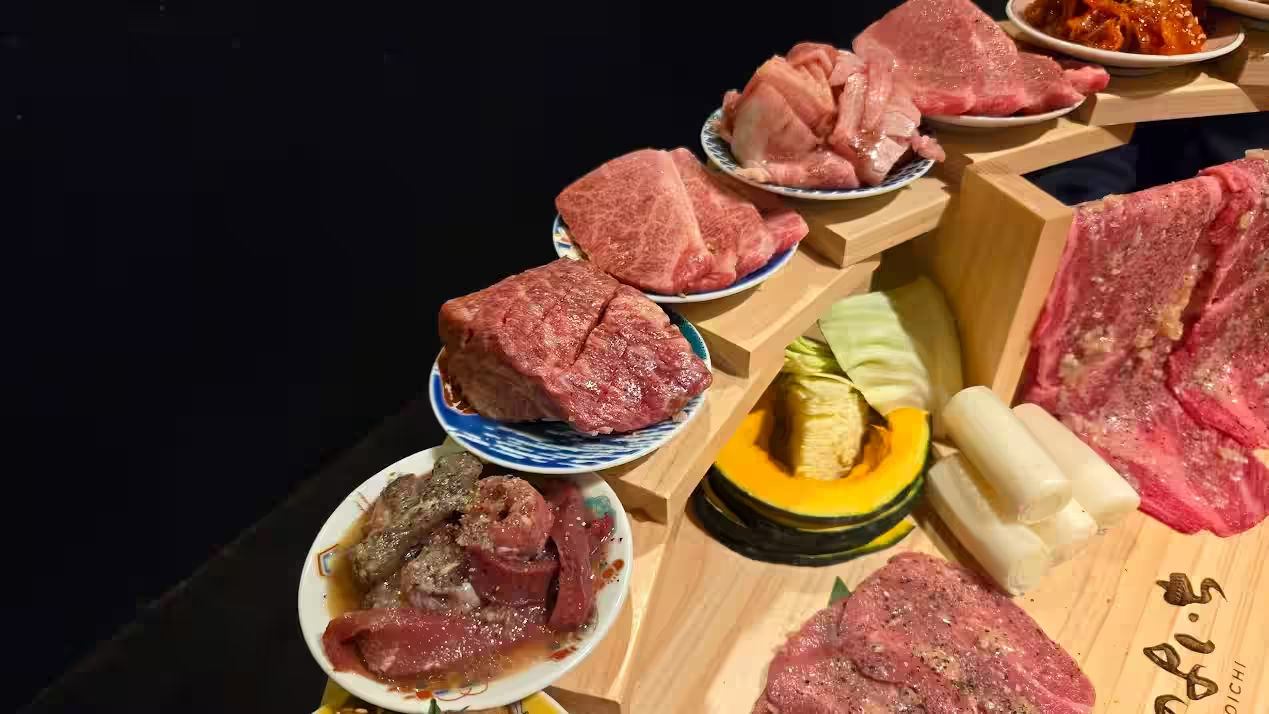
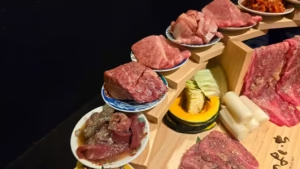
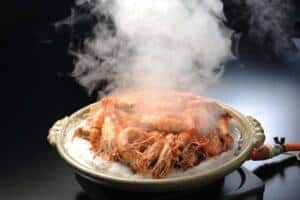
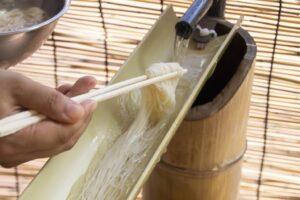
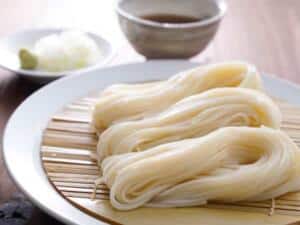
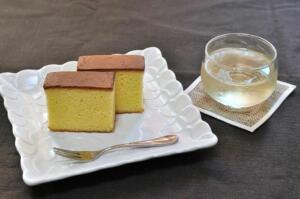
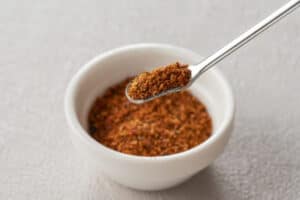
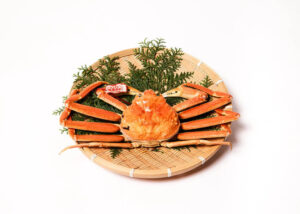
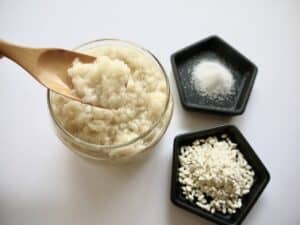
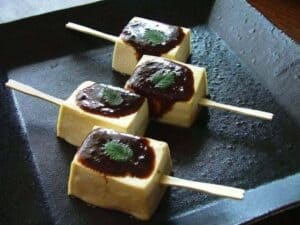
Comments